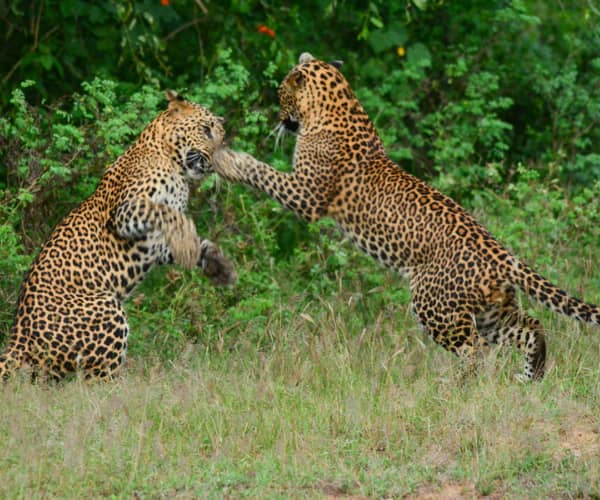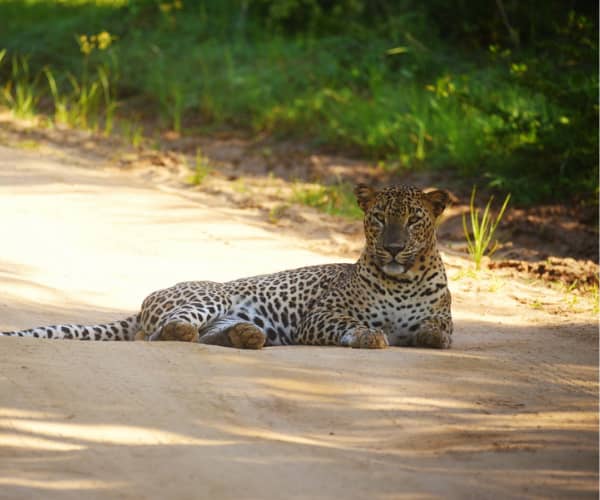
Mar 16 2022.
views 496The iconic Panthera pardus kotiya or the Sri Lankan leopard has been threatened to the point that conservationists are now taking extra efforts to prevent its population from becoming extinct. The sub-species of this charismatic animal are endemic to Sri Lanka and widely distributed across the island’s dry zones and low country wet zones with habitats ranging to the cloud forests of the highest elevations in the country. As means of initiating and sustaining a science-based conservation strategy, it is important to understand the distribution and ecology of the Sri Lankan leopard. To bridge this gap, the Wildlife and Nature Protection Society (WNPS) partnered with LOLC Holdings PLC to establish a network of specialized leopard conservation locations and Research Centres across geographically important areas in the country.

Speaking at the event, Prof. Enoka Kudavidanage said that this project aims at creating a platform for interested research groups to come together to protect the leopard. “We need a pathway to coexist. Protecting Sri Lanka’s big cat species should be a national priority. The Sri Lankan leopard is an umbrella species, which means when we conserve the leopard, it will automatically conserve the habitats that other species also occupy. It’s an apex predator. If not for them there will be an imbalance in the food cycle. It’s protected so that you cannot harm them. Harming them is a crime. The local leopard population has been estimated to be less or around 1000. Population numbers change and there needs to be an analysis on whether they increase or decrease. The WNPS recently launched the Leopard Day in order to remind, recap, and rethink what we are doing to bring people together in order to conserve the leopard.”
In terms of leopard distribution, the general presence and absence is now been made aware due to social media. “We have a rough estimation of the population size. We have individual identities for leopards as well. A leopard can be identified from rosettes and there have been successful projects in Wilpattu, Horton Plains and Yala, etc. and this gives a sense of closeness to the animal. It’s better to call a leopard by its name. We also need to understand the ecological aspects of known leopard habitats. Having scientific information alone doesn’t mean that we haven’t done well. It has to be translated into conservation approaches. While we conduct this research we are bringing other researchers to a common platform.”
She further said that there are random records of the presence and absence of leopards outside protected areas.

“We also have death records. Therefore we are trying to tackle problems one and a time. Why does the human-leopard conflict happen in the Hill country? Some of the main reasons include habitat loss due to irregular land-use patterns. We need more support from law enforcement authorities. Due to the lack of law enforcement, it has been difficult to curb crimes. This is the same for humans and animals. If you set up a snare and if you’re not punished, it will be repeated again. If you do a wildlife crime and impose a penalty of 10,000 it will be done again to earn twice more. We need veterinary treatment; when an animal is injured it should be taken for treatment and the priority is its safety. Therefore, information has to be shared and converted to conservation measures.”
One of the emerging threats and challenges in terms of leopard conservation is the fact that a global market has emerged for cat body parts. “The illegal wildlife trade is a lucrative industry. Leopard body parts are traded. A lot of countries have lost their big cats. Now the attention is coming to Sri Lanka. Here and there we have leopard body parts, skin being found, etc. There are red alerts and we need to do something at this stage. For this project, we are thinking of the entire geography but focusing on areas that are threatened due to limited resources. Hot areas will be identified in terms of the threat, presence, and areas with data deficiencies.”
In the initial phase, six leopard research stations will be set up in identified locations including Okanda or Panama, Morningside, Kilinochchi, Belihul Oya, Maskeliya or Nallathanniya, Sigiriya, or Ritigala. The project will monitor the presence of leopards in selected geographical areas using camera traps and surveys.
“The project aims to address a few key areas including habitat degradation in the hill country, rapid responses for injured leopards, ecological efforts, awareness, ways to mitigate poaching, snaring, crimes and conflict. We are thinking of bringing people together. The Project will look at scientific monitoring, and the team will be working with local communities to share knowledge and make them aware of the importance of this animal. People will not protect what they don’t know about. The leopard research centres will be interacting points to work with the Wildlife Conservation Department and Forest Department. There is also a leopard conservation plan drafted by WNPS. There have been 11 deaths reported over the last year but a number of deaths go unreported. We need science, conservation measures and we need people. Our aim is to protect leopards via conservation approaches
and improve coexistence,” she said in conclusion.
Photo courtesy: WNPS
0 Comments